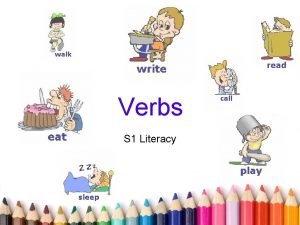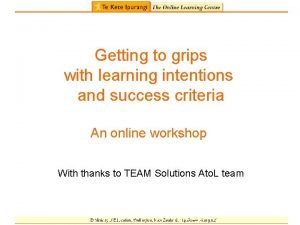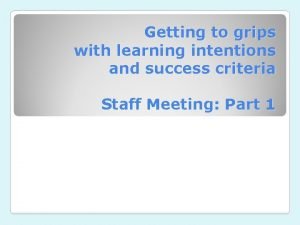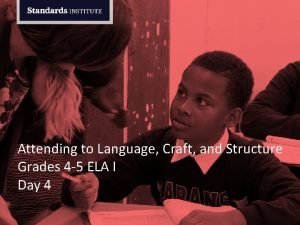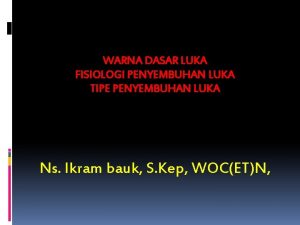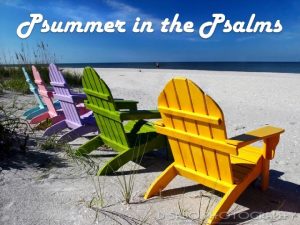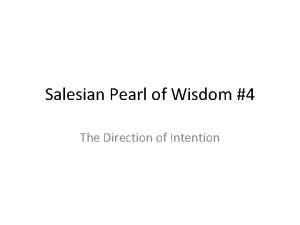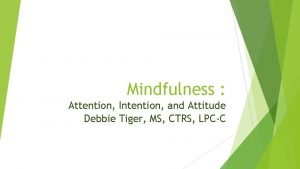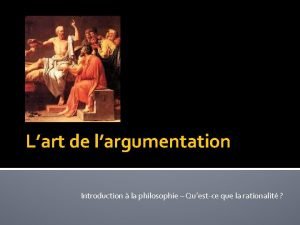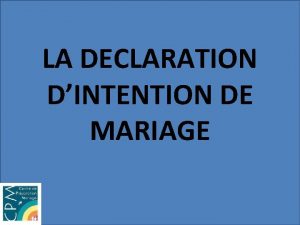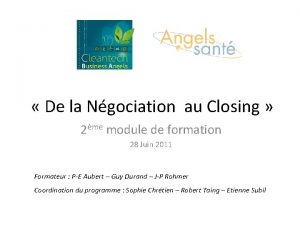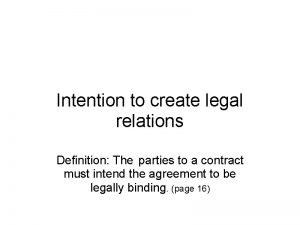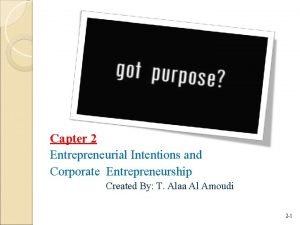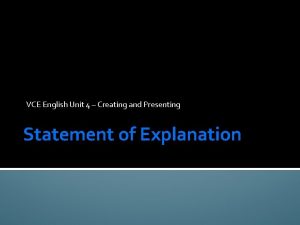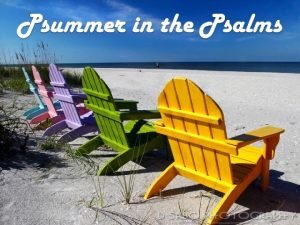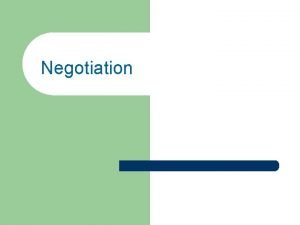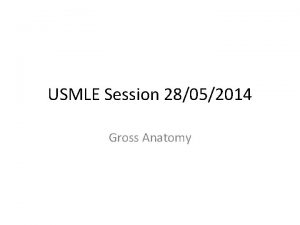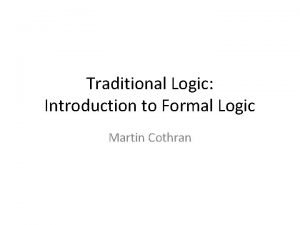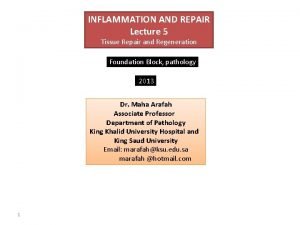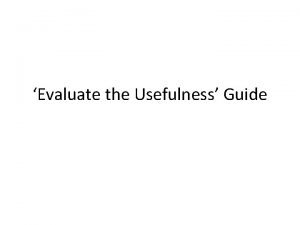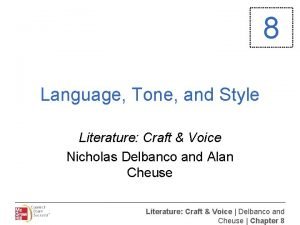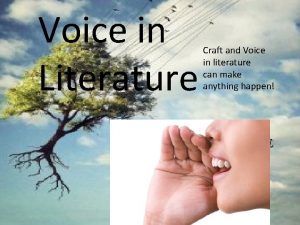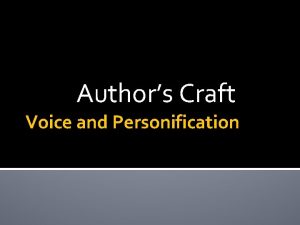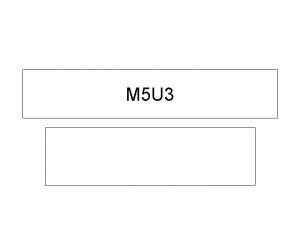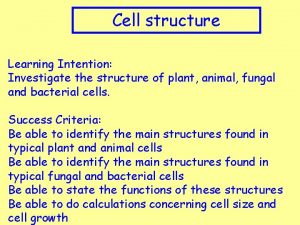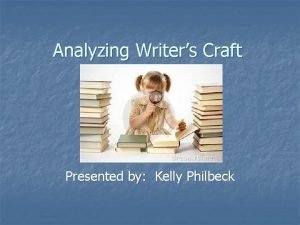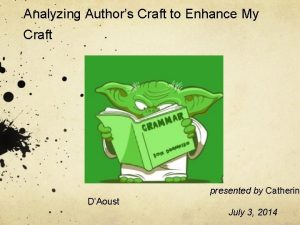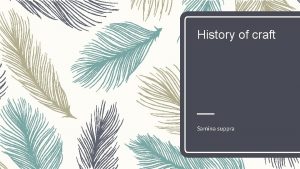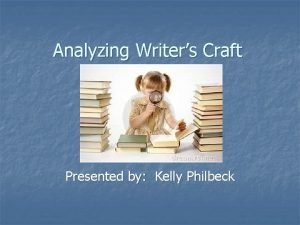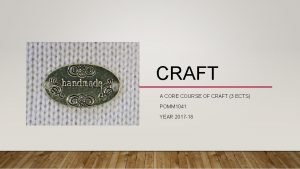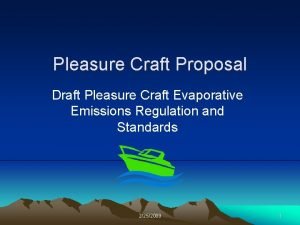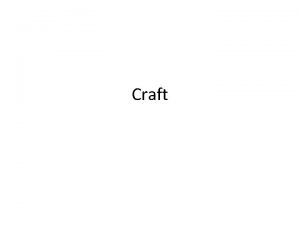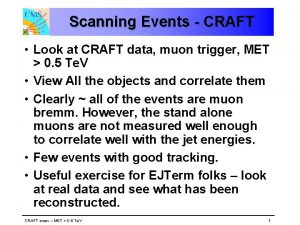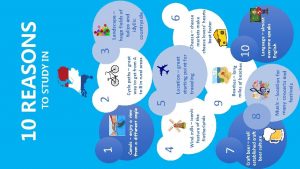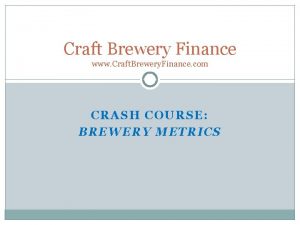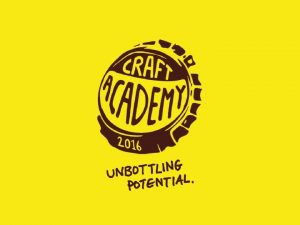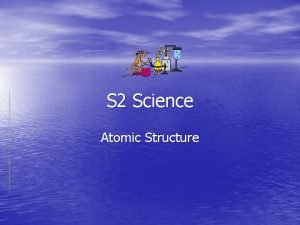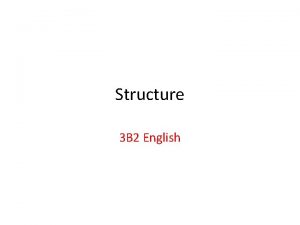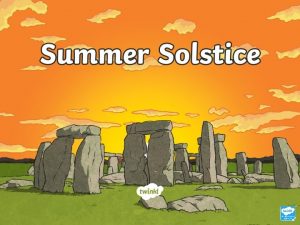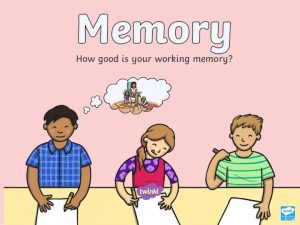Craft and Structure Craft and Structure Learning Intention



























- Slides: 27

Craft and Structure

Craft and Structure Learning Intention (Objective) Students will be able to determine the meaning of words, figurative and connotative; and analyze how alliteration and rhyme impact a text.

Flip Slips Skill Language & Vocab Breakdown Prior Knowledge STEP PREP Procedures Anticipation (1 Practice Problem Before Procedures ) Textual Evidence Practice STEPS TO Skill or Problem How does figurative language impact a text?

Skill Focus The skill for this week is. . . Determine the meaning of words and phrases as they are used in a text, including figurative and connotative meanings (similes, metaphors hyperboles, and personification); analyze the impact of rhymes and other repetitions of sounds (e. g. , alliteration, rhyme) on a specific verse or stanza of a poem or section of a story or drama.

Success Criteria In other words, you will be able to tell how words are used, why, and how they impact the meaning of a text including figurative language.

Vocabulary Copy the following words: Hyperbole Analyze Personification Figurative Alliteration Connotative Rhyme Metaphor Comparison Simile

Vocabulary Strategy: Word Analysis Complete a word analysis for the vocabulary words given. Write the word, create a definition, create a non-definition, then create examples to demonstrate the meaning of the word.

Vocabulary Analyze- to determine and explain the nature and meaning of something Figurative- expressing one thing in terms normally used for another

Vocabulary Connotation- a meaning suggested by a word or an expression in addition to its exact meaning. Metaphor- a figure of speech in which two things are compared without the use of the words like or as.

Vocabulary Compare- to examine in order to discover likenesses or differences. Simile- a figure of speech in which things different in kind or quality are compared by the use of the word like or as.

Vocabulary Hyperbole - exaggerated statements or claims not meant to be taken literally. Personification - the attribution of a human characteristic to something nonhuman

Vocabulary Alliteration- the repetition of a sound at the beginning of two or more neighboring words. Rhyme- close similarity in the final sounds of two or more words or lines of verse.

Prior Knowledge Can a word be used positively and negatively? Have you ever heard songs with rhyming words? How are these songs different from non-rhyming songs?

Anticipatory Set Find three examples of figurative language in the poem. Explain how you selected each one. The bright stars dance like ballerinas, Leaping like little balls of fire. Moving here and there as they balance, Swaying softly, sweetly, they walk on wire. The stars put on a show for all, Fiery, fierce, flirting, they never tire.

Steps Step 1: Read the assigned passage. Step 2: Write as many comparisons you can find.

Steps Step 3: For each comparison, circle the two things being compared. Step 4: Label each comparison as a simile or a metaphor.

Steps Step 5: Reread the passage and look for examples of personification. Write them in your “evidence” Step 6: Explain why these examples are personification. What “human” verb is being used?

Steps Step 7: Reread the passage again and write down any hyperboles. Step 8: Explain why these would be considered hyperboles.

Steps Step 9: Reread the passage. Write down words or phrases that are positive. Step 10: Why do you think these words or phrases have a positive connotation?

Steps Step 11: Write down these words or phrases that are negative. Step 12: Why do you think these words or phrases have a negative connotation?

Steps Step 13: Search the passage for any alliteration. Write down as as many examples of alliteration you can find. Underline the repeated sound.

Steps Step 14: How does the alliteration impact the line? Step 15: Look at the last word of each line. Write down the ending words that rhyme.

Steps Step 16: Do you see any pattern in the rhyme? Step 17: How does the rhyme impact the passage?

Textual Evidence Find three examples of figurative language in the poem. Explain how you selected each one. “The bright stars dance like ballerinas” - this is a simile, a comparison using the word like and it is personification because stars don’t dance, people do. “Fire, wire, tire”- these words form a rhyme in every second line in the stanza. “Swaying softly, sweetly”- this is alliteration, each word in succession beginning with the letter ‘s’.

Flip Slip: What do you Remember? Remember: Rewrite this week’s skill in your own words. In your own words write down and define three vocabulary words.

Flip Slip: What do you understand? Understand: Write the steps in chronological order. *Search the poem for any alliteration. *Circle the like or as in each simile. *Write down the ending words that rhyme. *Write down the comparisons in your notes. *Reread the passage. Understand: Which step will the most challenging and why?

Apply APPLY Read the assigned passage. Follow steps 1 -24.
 Learning intentions verbs
Learning intentions verbs Learning intentions and success criteria examples
Learning intentions and success criteria examples Learning intention examples
Learning intention examples Summarising learning intention
Summarising learning intention Cuadro comparativo de e-learning b-learning y m-learning
Cuadro comparativo de e-learning b-learning y m-learning Language craft and structure
Language craft and structure Primary intention adalah
Primary intention adalah God give me direction
God give me direction Direction of intention
Direction of intention Mindfulness intention attention attitude
Mindfulness intention attention attitude Exemple pente fatale
Exemple pente fatale Lettre d intention mariage
Lettre d intention mariage Table de capitalisation
Table de capitalisation What are creative intentions in drama
What are creative intentions in drama Definition of intention to create legal relations
Definition of intention to create legal relations The intention to act entrepreneurially
The intention to act entrepreneurially Going to is used for plans, decisions and intentions.
Going to is used for plans, decisions and intentions. How to write a statement of intention vce english
How to write a statement of intention vce english Direction of intention
Direction of intention Direction of intention
Direction of intention Dimensions of conflict handling intentions
Dimensions of conflict handling intentions Essential tremor vs intention tremor usmle
Essential tremor vs intention tremor usmle Simple apprehension
Simple apprehension Study population
Study population Tissue repair
Tissue repair Intention to learn
Intention to learn Literature craft and voice
Literature craft and voice Literature craft and voice
Literature craft and voice
